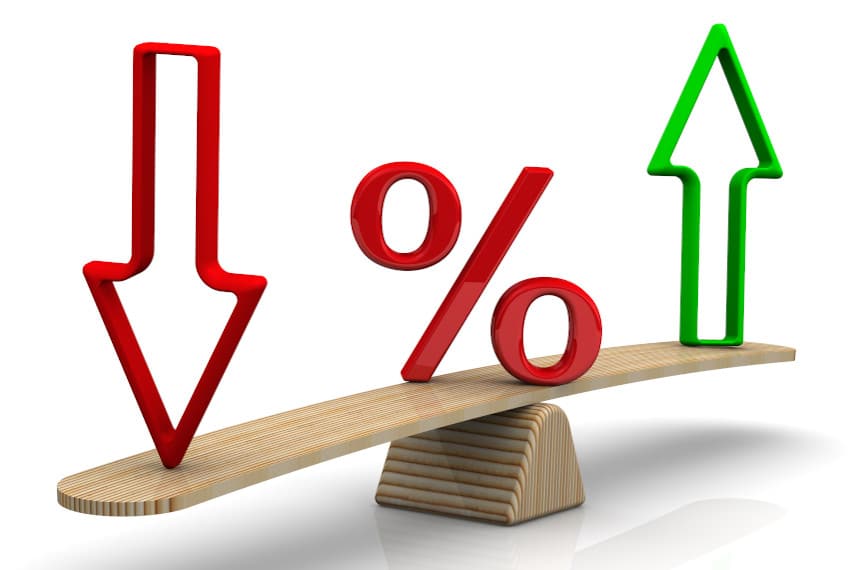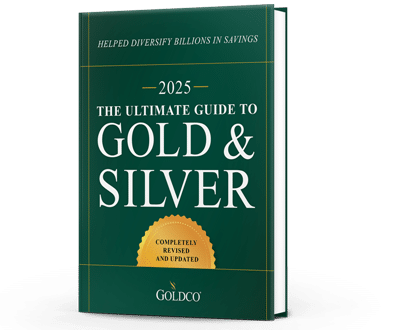6 Indicators of a Potential Recession
It seems that in the media today there are more and more mentions of the dreaded R-word: recession With growing economic uncertainty, the threat of potential recession seems to be growing as...
Economy

Many people don’t give interest rates a second thought. Interest rates are what they are, or so they seem, and we deal with them accordingly. But interest rates are among the most vitally important price signals in modern developed economies, and their movements can have major impacts on the economy.
Without delving too much into interest rate theory, interest rates are in a nutshell the price of time. They coordinate consumption and savings, with lower interest rates spurring present consumption and deterring saving, while higher interest rates inhibit consumption and incentivize saving. And when central banks begin to manipulate interest rates, as they do today, all sorts of mischief occurs.
At some point, however, central banks cease being able to control interest rates, and markets reassert themselves. That’s a dangerous situation in which to be, as investors of all sizes are thereby left up to the movings of the market, a market with which they may not be at all familiar.
Over the past decade, interest rates in the United States have been at record low levels. The federal funds rate, the benchmark rate set by the Federal Reserve, has been at nearly zero for most of that time. At this point, interest rates can only go one of two directions: up or down. Each of those directions could have dire consequences for the economy.
You may think that with interest rates near zero they couldn’t possibly go any further downward, but you’d be wrong. Negative interest rates not only are possible in theory, they’re also being put into practice around the world. But the effects aren’t good.
If you think about it, a negative interest rate means that a lender is paying you to borrow or hold his money. In the banking context, a negative interest rate on a bank account means you are paying the bank to hold your money. We’re all used to free bank accounts, but that just means banks are making their money elsewhere on fees. With negative interest rates, the cost of a bank account is up front.
You may wonder who would be so dumb as to accept a negative interest rate? But if you’re a large cash-holder and don’t have great options to choose from, a negative interest rate may be preferable to storing cash with a depository and may still be cheaper than other options.
Countries such as Denmark have had negative interest rates for years. And while banks initially tried to eat some of the costs of those negative interest rates themselves, they eventually started passing some of those costs on to their customers. In Denmark the threshold is incredibly low, with depositors with as little as $16,000 in the bank being forced to accept a -0.6% interest rate, or about $100 a year.
Practically speaking, however, there’s a limit to how low interest rates can go. At some point the cost is just going to be too great, and depositors will start pulling their money out of banks. When that starts happening, it could collapse the economy.
With the fractional reserve banking system that exists today, a relatively small percentage of deposits underpins a huge pyramid of loans. Pull out those deposits and the loan pyramid collapses. That’s what everyone wants to avoid. But pushing negative interest rates too low could cause that to happen.
The Fed hasn’t ruled out negative interest rates in the US. While it may not seem likely, it’s certainly possible that the Fed would decide to push the federal funds rate below zero. If that happens, would banks pass the costs on to their consumers? How would you react if you suddenly had to accept a negative interest rate on your savings account?
Pushing rates into negative territory is like playing with fire, which is perhaps one reason the Fed hasn’t really considered it. But it’s still possible, and a possibility which investors should prepare for.
There seems to be a consensus among policy experts and media commentators that interest rates can’t possibly rise since the Fed’s policies are what impacts interest rates. But at some point excessively loose monetary policy backfires and interest rates start rising out of control. That’s what we saw in the late 1970s and early ‘80s as the Fed lost control of interest rates, which proceeded to skyrocket.
We haven’t seen interest rates like that in decades, but they could very easily return. The Fed is determined to boost inflation to an extent that we haven’t seen in years, and with the explosion in the money supply that has occurred since last year, the Fed could very well lose control of monetary policy if it isn’t careful.
At some point markets may rebel against the massive amounts of federal debt entering the market. Even if the Fed were to try to monetize all of it, at some point market actors aren’t going to accept more debt at zero interest rates. They’re going to demand to be paid more to accept new debt, and interest rates will rise regardless of what the Fed does.
The reason people trust the Fed is because the Fed normally maintains control over interest rates, or at least so it seems. Market interest rates tend to move with the flow of the federal funds rate, so the Fed looks like it’s pulling the strings of the economy successfully. But when times get tough, and especially today when the Fed is engaged in unconventional monetary policy and drastically easing, interest rates may go up even when the Fed tries to force them down.
There’s nothing wrong with market interest rates. In fact, that’s what we want to see. But markets have been so coddled by the Fed’s easy money for decades that no one remembers what it was like when markets determined interest rates. Natural rates of interest would be far higher than the artificially low interest rates we see today, and that could severely depress business activity if interest rates were to rise suddenly to market levels. That’s why the Fed is working feverishly to keep interest rates low, otherwise the massive house of cards built by overly indebted US companies could come crashing down.
The reality, however, is that whichever way interest rates move, investors will be hurt. Negative interest rates will further hurt savers and investors, who will face a penalty for saving money or parking cash even for small amounts of time. They will benefit debtors, including the biggest debtor of all, the federal government. And if they go too far negative, they could induce a massive bank run that could bring the financial system to its knees.
If interest rates rise, on the other hand, the massive debt bubble that has exploded in size since the 2008 financial crisis could come crashing down. In short, no matter which way interest rates move, the results could be disastrous for investors.
If that’s the case, you may wonder if there are any investments that could withstand these scenarios? Two in particular stand out: gold and silver.
The performance of these two precious metals can often improve during times of economic turmoil. During the 1970s, for instance, gold and silver gained value at more than a 30% annualized rate. And during the aftermath of the 2008 financial crisis, gold nearly tripled in price, while silver more than quintupled.
That ability of gold and silver to gain value when other assets are faltering is part of what makes them so popular with investors looking to protect their assets against loss. And as more and more investors learn that, gold and silver will continue to grow in popularity.
Modern investment vehicles such as a gold IRA or silver IRA even allow investors to protect tax-advantaged retirement assets. By rolling over or transferring assets from a 401(k), TSP, IRA or similar retirement accounts into a precious metals IRA, you can protect your existing wealth while not incurring any additional tax consequences.
If you’re aware of the problems that could occur if interest rates begin to move, have you decided to protect your assets with gold and silver? Call the experts at Goldco today to learn more about how gold and silver can defend your retirement dreams.

